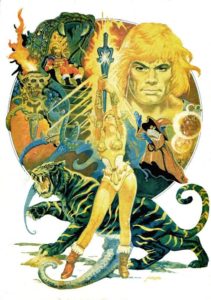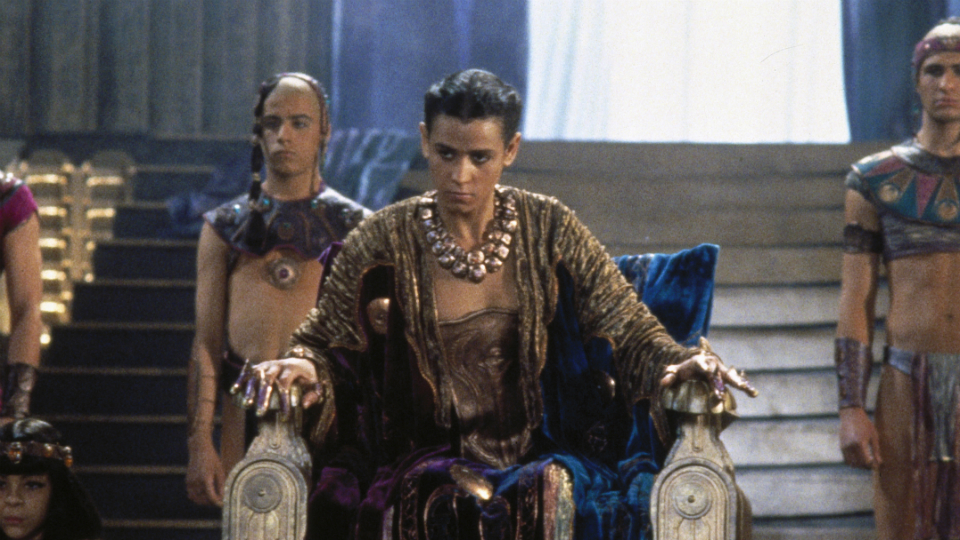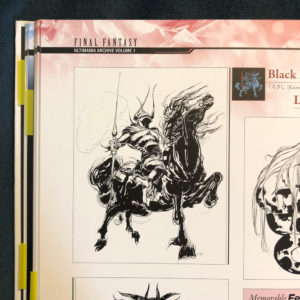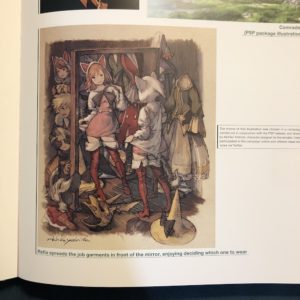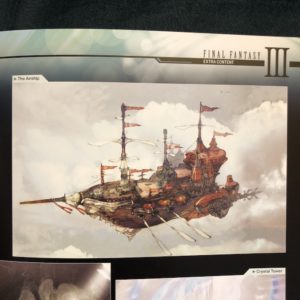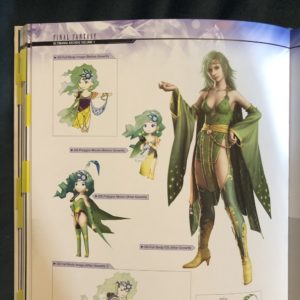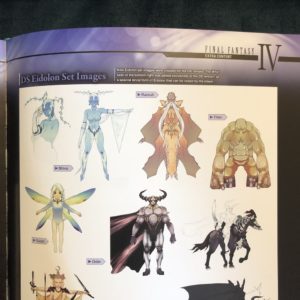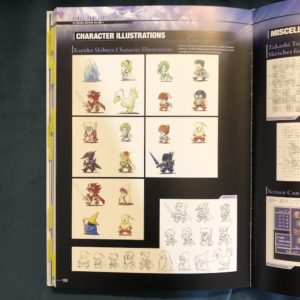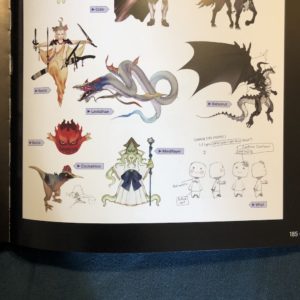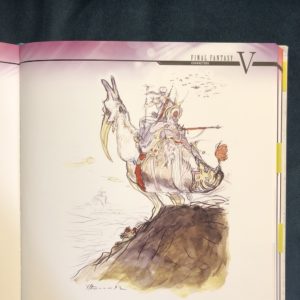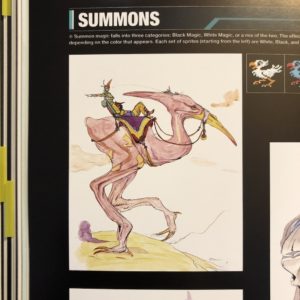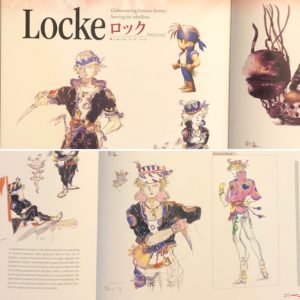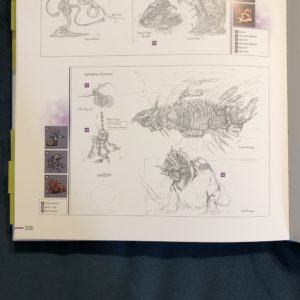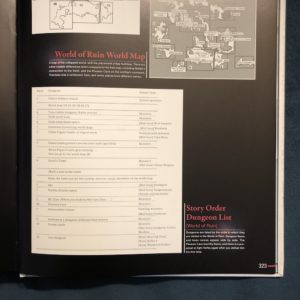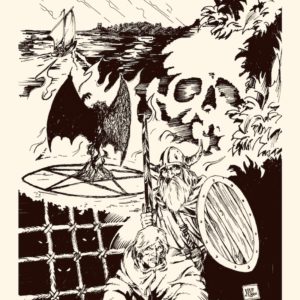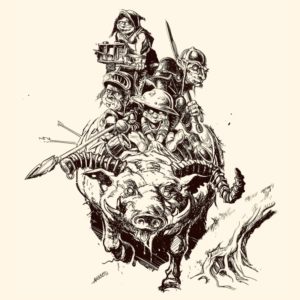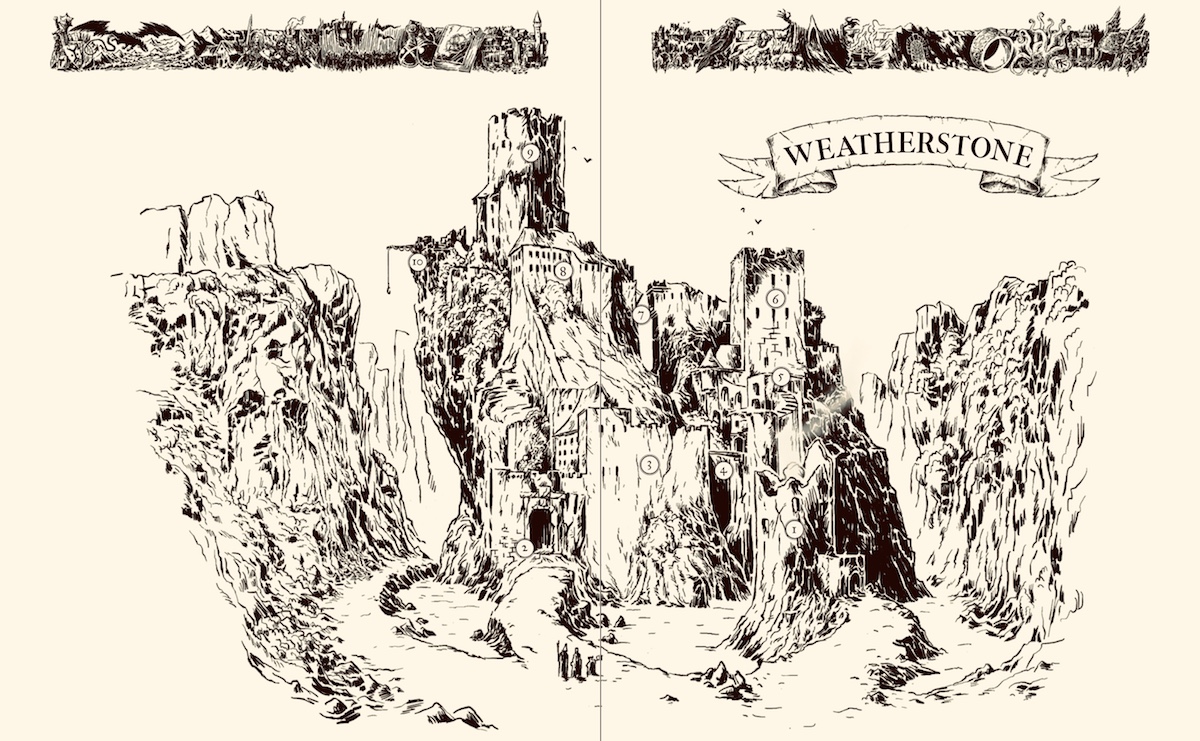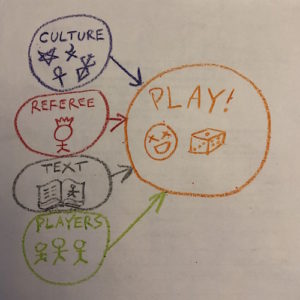Far be it from me, that I should tell anyone else how to social media. But here is a mutagen that can transform diversions of self-disclosure into game fuel. The input: 20 films that had an impact on you, for the next 20 days. The catalyst: …related to how you game. The result: Show me 20 moving pictures that influenced how you play tabletop RPGs. Presto! There, much better. (No judgment regarding self-disclosure, but this is a game blog.)
- Die Hard and every other complexcrawl action movie. The Rock (Die Hard on Alcatraz) comes to mind, but I honestly can’t recall if it is any good. See also: Dredd.
- Man with No Name/Dollars trilogy. Honestly, I think I want this series to influence my games more than it actually has, which is why it is up here at number 19. I have come to appreciate the structure of Westerns for adventuring far more as an adult than previously. And, borderlands-style D&D is basically the wild west with swords and spells:
“People want to play in a historical setting like the dark ages, but they don’t want serfs, they don’t want an all powerful Church dictating the rhythms of daily life, they don’t want any social constraints on free movement and agency. They want to play Vikings and still let that one guy in the group be a ninja. They want the wild west, with swords.” —Beedo paraphrasing Ken and Robin Talk About Stuff - Pirates of the Caribbean involves more swashbuckling than tends to happen in my games, and I find pirate tropes somewhat tiresome, but Sparrow is a wonderfully Vancian character and there are skeletons. Maybe the best skeletons in any movie? I also have a weakness for Depp. (Only the first movie is really worth it though.)
- This is really a placeholder for some other post-apocalyptic movie, though I am going to go with Waterworld for now, because that is what comes to mind despite all its weaknesses. The original Mad Max is a greater cinematic classic, and Fury Road is the genre masterpiece, but neither have substantively influenced the way I game. That said, D&D is the apocalypse, and Waterworld would make a much better D&D campaign than it did a movie. Here is Wayne R. on the implied setting of 1974 OD&D:
Cities in such a place are probably small affairs. This is not the world of grand cosmopolitan wonders; it’s downright post-apocalyptic and probably has a few thousand people per city. Trade is downright perilous, given that you’re likely to run into dragons, or giant crabs if you follow the river, or many other horrid things. - Blame! is an anime technomegadungeon based on the aesthetic vision of Tsutomu Nihei.
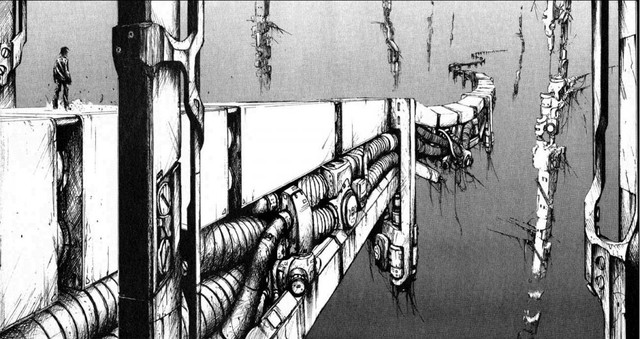
Image by Nihei (source)
Do I need to say more?
- Season of the Witch owns exactly what it is without any ironic dodges, and is not badly made either. Inspirational for Lamentations of the Flame Princess style fantasy.
- Brotherhood of the Wolf is also Lamentations relevant, as pseudo-historical dark fantasy, and is medieval European wuxia (“action horror” according to Wikipedia, for whatever that is worth). Monica Bellucci plays a significant role, and the biggest badass is Mani, an Iroquois martial artist brave. Obviously an adventuring party.
- Trigun. The emo vibe is somewhat adolescent, but the setting would be pure gold for adventuring. It is an archaeofuture wild west of mostly isolated settlements on a desert world where energy and water are scarce but bullets are plentiful. Trigun would probably rank higher if the tone was less goofy, though I do appreciate the cleverer touches of absurdity: the reward for Vash’s capture is sixty-billion double-dollars $$, the supporting protagonists pursuing Vash are insurance company functionaries whose company is sick of paying out for Vash’s disasters, Wolfwood’s cross bazooka, and so forth.
- Star Wars: A New Hope. Rebellion against an oppressive empire remains one of the better starting scenarios and is a welcome alternative to buccaneers meeting in a bar to plan dungeon heists (though I do love dungeon heists). See also: Final Fantasy VI for a similar setup in another medium.
- Indiana Jones and the Temple of Doom is the paradigmatic dungeon heist, with traps and everything. I would still like to find a way to turn it belongs in a museum into an XP incentive mechanism.
- Masters of the Universe (cartoons). Some brief, disorganized observations. Summon He-Man is a spell, cast by the power sword, that binds an extradimensional entity into your body, transforming it in the process (credit to Roger B. for that particular recent insight). Hordak is a cosmic space cyborg vampire dictator. By my preferences, the best Carcosa so far is through the lens of Eternia. See the gallery of Earl Norem Masters of the Universe art at Monster Brains for associated inspiration.
- Vampire Hunter D. Monster hunting in a cyborg gothic future. Quoting Wikipedia: western, science fiction, horror, high fantasy, H. P. Lovecraftian mythos, folklore and occult science. The visuals were also inspired by Yoshitaka Amano’s art. Cousins with Castlevania and Bloodborne.
- Stargate blended genres into a sci-fi action movie which could serve as a workable adventure sandbox or collection of adventure sites. It avoids submitting totally to the tyranny of Chekhov’s Gun logic, where the only point of anything is narrative development, which I find unsatisfying. I may have had a fantasy campaign with esoteric stealth bombers shortly after seeing this the first time.
- Lost is a low level adventure party shipwrecked and building a stronghold to survive while confronted with mysterious supernatural challenges. Good settlement development systems remain an open challenge for OSR designers. I would stop at the first season now.
- Jurassic Park is still one of the better dungeon crawls committed to film.
- Alien & Aliens. See everything I need to know about GMing I learned from Aliens. The fireteam in Aliens maps slightly better to a D&D adventuring party, but to me Alien is a tighter construction overall. John Carpenter’s The Thing is another relevant survival horror monster crawl, but it influenced me less.
- Nausicaa and the Valley of the Wind (& most of Miyazaki’s other output, which is aesthetically and structurally similar) is unparalleled for evocative, wondrous adventure setting. Miyazaki’s work is occasionally flawed by didacticism and transparent messaging, but Nausicaa is about as perfect a final creation as I can imagine. Some specific highlights are the fungal grotto underworld, the airship invasion, and the monsters. Hideaki Anno, who later gained recognition as the creative impetus behind Neon Genesis Evangelion, animated the god warrior sequence. For me next in line would be Princess Mononoke and Spirited Away (for all the wonderful kami), but no Miyazaki is quite as inspirational for games as Nausicaa.
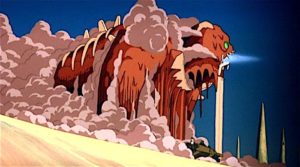
God Warrior (source)
- The Walking Dead is one of the better depictions of an adventuring party exploring a dangerous, monster-haunted world, struggling to survive, and, if possible put down roots, though there is too much soap opera for my games. The development and periodic loss of settlements also presents a challenge to developers of OSR systems to manage stronghold developments. Most of the existing approaches to building settlements realize Strongholds as culmination, unlikely to be reversed, and a shift from exploration into a domain game. This has some appeal, but I would like a system which remained closer to boots on the ground, a Batman-level system rather than a Superman-level system, to misappropriate the metaphor from Finch’s Primer.
- The Abyss. Trapped in an underwater complex. Threatened by mysterious entities that are both terrible and wonderful. The darkness of the deep in The Abyss is the darkness I want to evoke in the fantasy underworld. That’s why nonsense like torches and resource management matter.
- Berserk: Golden Age Arc because Berserk is the foundation of my dark fantasy trinity (along with Dark Souls and Kingdom Death). It effectively calibrates mythic resonance with novelty and brings intensity without ever descending into parody or ironic detachment.
I can extract a few trends from this list. The first is that exploration and survival horror inform my gaming far more than the trappings of fantasy. A good sewer crawl with monsters in modern LA would probably get me more in the mood to game than some epic fantasy. Jackson’s Fellowship is almost there, but feels too linear, and the characters are too reactive, to be particularly inspiring as a D&D adventure to me. (That said, I am fond of the movie as a realization of Alan Lee’s visual imagination of Middle-Earth and it is hard to imagine a better casting for any of the characters.) I prefer the aesthetics of fantasy for gaming compared to science fiction or modern settings, but some large part of that preference is the constraints provided more naturally by the narrow horizons of a fantasy world.
The second trend is the presence of a wondrous, distinctive setting which begs exploration, with aspects of the frontier or points of light, which means that civilization exists in isolated outposts scattered throughout a dangerous wilderness. … Between outposts lies only monster–haunted wilderness dotted with the ruins of a once glorious past and darkened by the ever-present shadow of the unknown (Rob Conley’s 2008 Points of Light supplement).
The list here only overlaps slightly with what I would say are my favorite movies. The Berserk Golden Age Arc, The Abyss, the two Alien films would be favorites, and probably Nausicaa, but that might be it.


